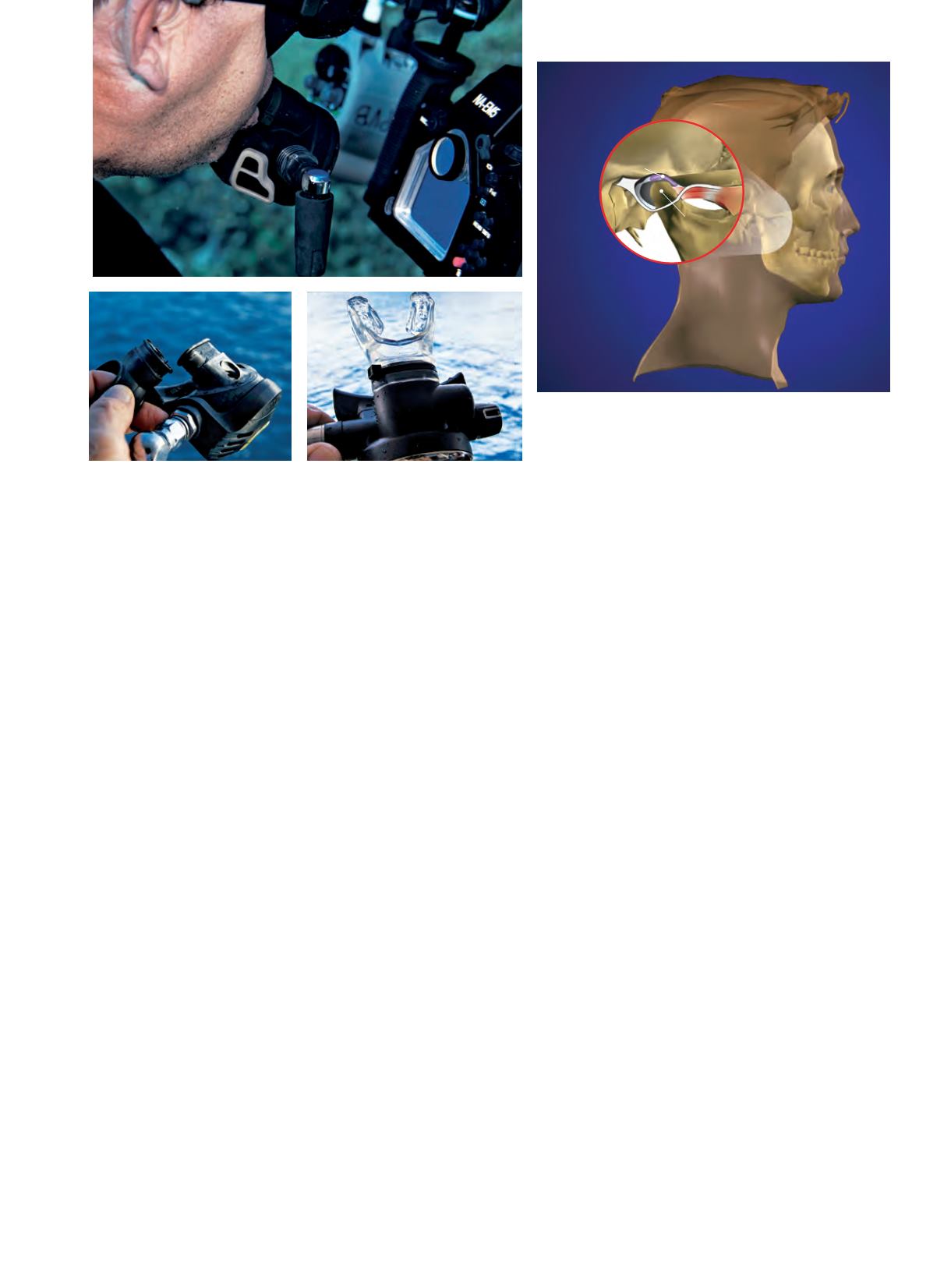
|
55
Divers who experience jaw pain or other TMD
symptoms should seek a dental consultation and
may wish to try equipment modifications such as a
swivel adaptor or a custom mouthpiece.
who have silent or undiagnosed conditions or just
plain flimsy joints, which only become symptomatic
when the stress of holding a traditional mouthpiece
is imposed,” said Dr. Randall Moles, orthodontic
specialist and developer of the SeaCure
TM
custom
mouthpiece (one of several commercially available
custom mouthpieces). “So there is a group of people
who will have no TMD symptoms prior to diving who
can develop TMJ problems because they had weak
joints or a preexisting subclinical problem.”
WHAT YOU CAN DO
There are a few styles of standard mouthpieces
designed for scuba diving. When selecting your diving
equipment, try several mouthpieces to find the style
and size that fits you best. For added comfort, some
divers add a second-stage swivel adaptor to their
regulator that adjusts to subtle head movements and
reduces hose tug. Some regulators incorporate this
adaptor as standard design.
If you experience symptoms of TMD during or after
diving, seek a dental consultation. While most cases of
diving-associated TMD resolve spontaneously, your
dental professional can recommend management
strategies such as muscle relaxation exercises, techniques
for reducing stress or, if necessary, medical intervention.
Your dentist can also advise or assist in the development
of a custom-fitted mouthpiece, which requires less
muscular effort for retention than the traditional
design. (There are also commercially available custom
mouthpieces that do not require a dental consultation).
“The dive industry has tried to make a mouthpiece
that will fit everyone, and in doing so they had to
make it soft and short due to the variability of teeth
and jaws,” Moles said. “A customized mouthpiece
is molded to fit one person and can be made out
of a stiffer material that goes to the back of the
mouth, which transfers the weight of the regulator
to the back — where the muscles are. This provides
leverage and greatly reduces the force needed to keep
the mouthpiece in place. In addition, because the
mouthpiece can be made of a much stiffer material, it
retains the bite marks that grip the teeth instead of the
diver having to constantly bite down to get a grip on
the soft spongy material of the standard mouthpiece.”
If you opt for a custom-fitted mouthpiece, consider
the proper positioning for a diver. “There is a common
mistake made during the molding: People keep their
head in the neutral position,” Balestra noted. “This
will not mold the mouthpiece correctly; instead the
individual should position his head as if he was diving,
tilting the head backward.”
SAFETY CONSIDERATIONS
If you decide to swap your mouthpiece for a custom
one, make sure your new mouthpiece fits your
regulator’s second stage. Not every mouthpiece fits
every regulator, and an ill-fitting mouthpiece could
incur leakage or decouple from the regulator. In
addition, when attaching your mouthpiece with a cable
tie, confirm tightness, and use a razor blade to cut off
excess and ensure there are no sharp ends.
Do not use a customized mouthpiece on an air
source that might be handed off to a buddy in an
emergency; it may make breathing difficult or be
impossible for another diver to use.
AD
Temporomandibular
Joint (TMJ)
condyle
temporal bone
mandible
disk
PHOTOS THIS PAGE: STEPHEN FRINK


